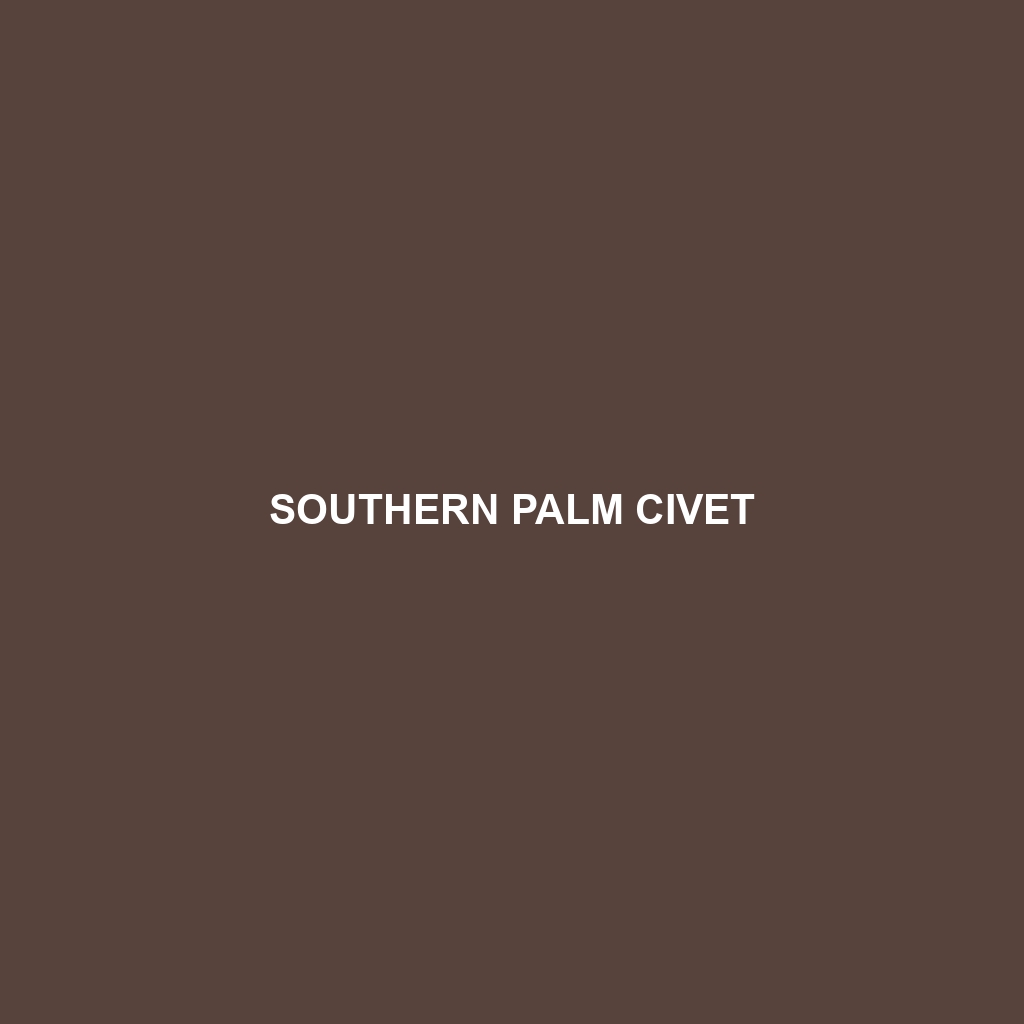Brown Palm Civet
Common Name: Brown Palm Civet
Scientific Name: Paradoxurus javanensis
Habitat: The Brown Palm Civet is primarily found in tropical rainforests across Southeast Asia, particularly in countries such as Indonesia, Malaysia, and Thailand. These nocturnal mammals thrive in dense forested areas, where they inhabit both lowland and montane forests, favoring habitats with plenty of vegetation and fruit-bearing trees.
Physical Characteristics: The Brown Palm Civet typically measures about 40 to 55 centimeters in length, with a long, bushy tail that adds an additional length of 40 to 50 centimeters. Its fur is predominantly brown, with lighter patches on the face, legs, and belly. Notable features include a pointed snout and large, inquisitive eyes, which are ideal for its nocturnal lifestyle. The distinctive markings and size of this civet may help in identification.
Behavior: Brown Palm Civets are known for their solitary and nocturnal habits. They are arboreal, spending much of their time in trees, and are also skilled climbers. They exhibit a unique behavior of marking their territory with scent, which plays a crucial role in communication with other civets. Their inquisitive nature often leads them to explore their surroundings in search of food.
Diet: The diet of the Brown Palm Civet mainly consists of fruits, particularly ripe palm fruits, berries, and occasionally insects and small vertebrates. They are considered omnivorous, and their feeding habits significantly contribute to seed dispersal within their habitat, which is beneficial for forest regeneration. Their preference for sweet fruits makes them essential in maintaining the ecosystem balance.
Reproduction: Brown Palm Civets engage in mating primarily during the wet season, which typically occurs between March and August. After a gestation period of about 60 to 70 days, the female gives birth to one to four offspring. The young civets are born blind and rely heavily on their mother for the first few months of their lives, gradually becoming independent as they grow.
Conservation Status: The Brown Palm Civet is classified as **vulnerable** due to habitat loss and hunting. Deforestation and the encroachment of agricultural activities, particularly palm oil plantations, significantly threaten their populations. Conservation efforts are essential to protect their natural habitat and ensure their survival.
Interesting Facts: Despite their common name, Brown Palm Civets are not true civets but belong to the family Viverridae, which makes them relatives to mongoose and genets. They are also known for their production of civet coffee, a unique coffee made using beans that have passed through their digestive system, adding to the species’ intriguing cultural significance.
Role in Ecosystem: Brown Palm Civets play a vital role in their ecosystem as seed dispersers. By consuming fruits and excreting the seeds, they aid in the growth of new plants, contributing to biodiversity in their habitats. Their presence also helps maintain the health of forest ecosystems and serve as prey for larger predators, further enhancing their ecological importance.
